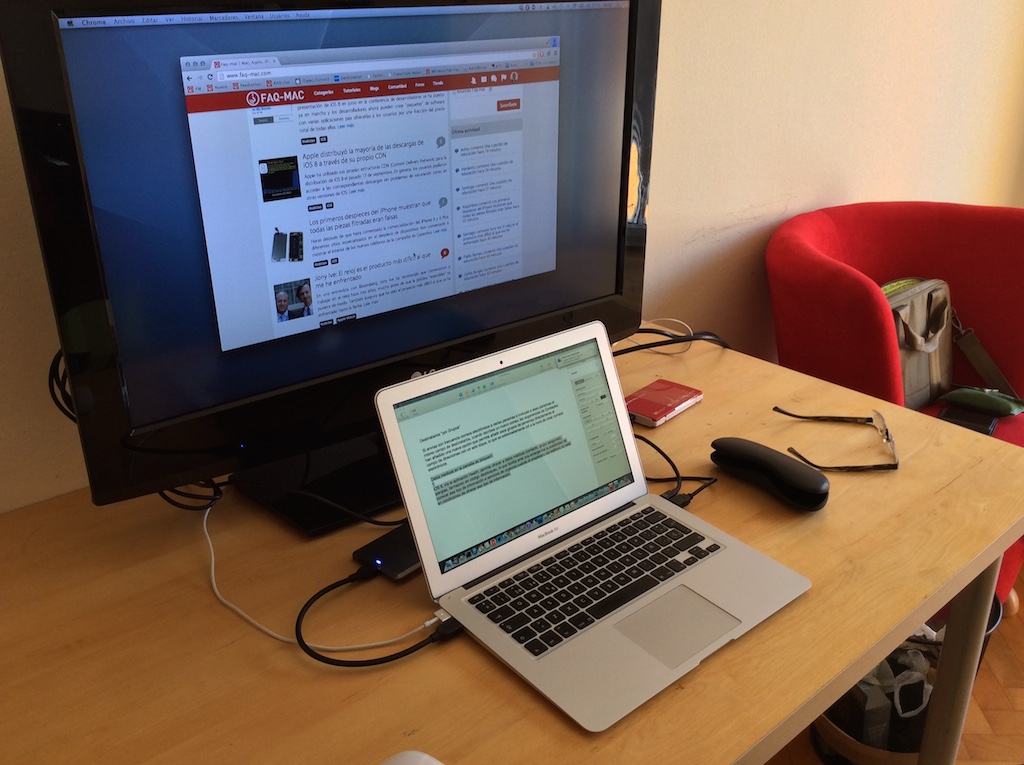How to use a MacBook to power an office-in-a-box

One modern definition of “office-in-a-box”, describes the trend of IT workers, often required to work off-site, to create a work space as functional as a traditional office space, yet portable enough to assemble and disassemble anywhere, from hotel rooms to coffee shops, and in some cases, even parking lots.
Incidentally, MacBooks are practically built to be the centerpiece of an “office-in-a-box”. When traveling for work, it’s hard to be picky about the type of accommodation a hotel may offer. Fortunately, even some of the Motel 6 on the low end, provide the essentials to build a portable office and be productive, and if one is lucky, free WiFi.
The first element needed is a decent size HDTV, which can be found in quite a few franchises, including Motel 6. Nearly every modern television set found in most respectable hotel franchises, feature HDMI connectors, at the very least. Connecting a MacBook to an external display, like an HDMI-enabled TV, has several advantages, including the ability to quickly setup and host presentations and work meetings, when time constraints, availability and conflicting schedules don’t allow to book a proper conference room.
To enhance a presentation, MacBooks can be also used in “closed clamshell” mode, by plugging in a wireless keyboard and pointing device, and use the external display only.
One caveat to remember is that, due to performance requirements, Mac OS X doesn’t allow to use external monitors when the MacBook is not plugged into a wall outlet.
In most cases, connecting a display via HDMI will work right away. If nothing appears on screen, the settings for all connected monitors can be found under System Preferences \ View \ Displays.
HDMI cable too short? Apple TV and Airport Express come to the rescue
Any 2nd generation Apple TV updated to v5.0, can be a very useful component of an office-in-a-box, by connecting a MacBook to it, via AirPlay.
When using public WiFi, or WiFi provided by a hotel, Airport Express will be needed to create a little wireless network where to manage all wireless hardware needed, from Apple TV, to Apple Time Capsule, and more.
Thanks to the real-time collaborative tools that are part of Apple Continuity, any iOS device can also be turned into a peripheral extension of a MacBook, turning any environment into a functional productivity hub.